Soul Chef Jacques Qualin – “I Chose My Own Path”
The Chef: Jacques Qualin
Title: “I Chose My Own Path”
The Location: J&G Steakhouse at the Phoenician Resort
By: Laura Stoddard
I make it a point not to do any research on people before I interview them. Sure, when it comes to chefs, I may know their names, or have briefly met them, or been to one of their restaurants or events, but that aside, I want to know as little as possible when I interview someone. A couple reasons for this. First, I want an unbiased, uninformed opinion so that I can experience this person and their story for myself. Second, I don’t want to ask any leading questions, such as, “Tell me about that award you won…” I only want to hear what that chef feels like sharing with me that day. Finally, I find it immensely gratifying after conducting an interview to do some follow-up research and go, ‘Whoa, that chef I was just talking to is a big deal’.
Such was the case with Jacques Qualin, Chef de Cuisine at the Phoenician’s stunning J&G Steakhouse. We recently met up at the restaurant, had a lovely conversation, and once I started doing follow-up research, discovered that, Whoa, that chef I was just talking to is a big deal. Though you’d never know it, based on how casually Jacques recounts his journey and rise through the culinary world. Fair warning to the Grammar Police, I’m not going to “Americanize” Jacques words, because his accent and the way he phrases things are part of his charm. (Who doesn’t like to listen to a Frenchman talk?)
BEGINNINGS
Jacques was born in the lush Franche-Comté County of eastern France, right on the border of Switzerland. It is a mountainous region, one he likens to the Catskills in New York, which is very cold in the winter months. The region boasts rich soil, plentiful agricultural resources, and hard-working locals. “We have a lot of cows, so a lot of dairy product, a lot of smoked meat, processed meat. We have a lot of streams and rivers, so a lot of trout and fish.” They also produce wine, both whites and reds, in a part of his county called Jura. “We have specific grapes there, but they’re very unknown. Jura wines, I could find them in New York City, but here [Arizona], the style of wine is very mineral, so for the American market it’s a little bit difficult to understand.”
Needless to say, ingredients and inspiration for cooking could be found in abundance in his beautiful, childhood stomping grounds, and they piqued Jacques’ interest. Things first started in the kitchen at home with his mother, who he credits as his inspiration. “I was watching her,” he says, “And she was a very good cook, actually. I was cooking a lot. I mean, I was 14 years old, and I was trying to make my first bread. After that, I bought some books and starting to, you know, see what’s around, and trying to duplicate some recipes. So, I was very interested in that.”
His father worked at a thriving automobile factory for the illustrious car maker, Peugeot. “In my county, it’s like the Detroit of here. It’s the birth city for Peugeot, and they huge in France. I mean, that’s like Ford here.” Aside from the agriculturists and wine makers, he says that pretty much everybody worked in that factory. His father was a manager, and his brother eventually joined the fold as well. “I’m the only one who didn’t really work at the factory. I chose my own path. I decided I didn’t want to! I wanted to be a chef since I was a child. I never really wanted to do anything else.”
THE PROGRESSION
In his teens, Jacques embarked upon a two-year apprenticeship. “That’s when you go to school and you work. It’s one week in school, and three weeks at work.” The school was just a small affair in his county, one he didn’t even mention by name, and the kitchen he worked at was in a modest hotel. But although the culinary school was small, it still provided a very comprehensive education. “You learn everything, all the standards. The program is very complete. You have to learn a lot; a lot of recipes to master. And you learning how to make anything—make a dough, the butchering—because at the end, you take an exam, and you have to go solely from memory.” Jacques thrived at the school. I love the way he nonchalantly summed up the whole experience: “So, you learning, and then, you graduating.”
After his apprenticeship, Jacques worked in a variety of places around France, putting into practice both his years of childhood learning and his two years of mastering traditional French cuisine at school. He soon found himself working in the Alps, and met a new friend named Julio Vallejo, who made a powerful impression on him. “He was a young chef at the time, and he was very inspiring—very food driven. When he was a boy still in France, he would wake up at two in the morning and go to the market (in Leon at the time, which was pretty far). He’d go to the market, come back, work, and after that, do the service. That was a lot.”
Julio directed Jacques to Paris. “He send me to some friend of his, and I worked in a private club that was called Saint James Club at the time, and it was high-end.” Not only was this Jacques’ first job in the glittering expanse that is Paris, it was also his first taste of true fine dining—and it suited him. He’d immediately found his niche. “I met this other chef who was very great,” he says, speaking of Claude Franques. “He was also involved in the high-end food, and he took me over to work at Rene Pujol, which used to be—I think they still—a three-star Michelin.” Following that, he worked in several other Michelin-rated restaurants, and studied under the tutelage of such culinary greats as Michel de Matties. And then it was time to go big time. Jacques secured a job at one of Paris’s (if not France’s) most renowned restaurants, the incomparable Taillevent. “It was and is a real institution,” he says, showing almost reverence for it. “I mean, at the time he was an old chef—the chef who opened it [Paul Cosnier]—and that was a three-star Michelin. Five days a week you’d do 120-140 for lunch, every day. So, a very busy place.” And quite the prestigious bullet point to put on one’s resume. Keep in mind, having already risen to these heights, Jacques was a mere 23 years old.
NEW YORK, NEW YORK
In usual, nonchalant fashion for Jacques, he proceeds with his story. “After that, sort of the same. At the time, I meet some people who came here to the States, and they got me excited about it. I said, Why don’t I try, and I can come here?” In 1990 he obtained a J-1 Visa (which allowed him to work in the States for a year). “So yes, I took the opportunity and I came to work in New York City with Daniel Boulud. He was the chef at Le Cirque, but the old location—I mean, for Sirio Maccioni, [which] at the time was the prime restaurant in New York City. It was very high-end. And Daniel was very interesting. He introduced me to the American market, and I had a better picture of things. So, you know, I did my time, and my contract ended, so I had to go back to France.”
Because of his exceptional culinary skills, and the good relationship he’d created with them, Taillevent asked Jacques to come back. He put in a few more years there and then moved on to a two-star Michelin restaurant named La Maree, where he was Chef de Partie. All this time, though, he couldn’t quite get that year in America out of his mind. It had made a great impression on him, so he decided to take his skills and ambition back to the States, long-term.
“I decide to come back here, because I like it very much. I worked for a friend of mine who used to have a small French restaurant in New York City. I met him at Le Cirque actually, and we were good friends at the time, so I took the opportunity, and I came back here.” Jacques would spend the next fifteen years in New York, and says moving to the States is the highest point of his career.
The stars aligned for Jacques, and he had the great fortune to meet world-renowned chef, Jean-Georges Vongerichten, who would play a major part in the rest of his career. “Meeting Jean-Georges,” he recalls, “I mean, that was big. So I work at JoJo, which was his first restaurant he open, and it was way back when he had only two, three restaurants. Now he’s got like 43.” Jean-Georges enlisted Jacques’ help to open his flagship Jean-Georges Restaurant, which included Café Nougatine, in New York City. Jacques spent about four years at Jean-Georges as the First Sous-chef, then left to become executive chef at Le Perigord, “Which is no longer,” he says, “But it used to be one of the institutions in New York City. It was an old place and I learn a lot.” So much so, that he came to the conclusion that he was ready to open his own restaurant. He called it The French Corner, located in upstate New York, which was only open for about five years, but received rave reviews in its time. “I got four stars from the New York Times, so it was highly rated.”
I asked if he’d ever consider doing that again; opening his own place. His answer was contemplative but noncommittal. “You know, I did it once. I can always do another time. I mean, that’s always something I consider. It’s always open.”
ARIZONA BOUND
Jacques’ next career move brought him out west. “It was at the time that the economy went down, so I kind of shift a little bit. You know, I was in contact with Jean-Georges, and he say, Are you interested to come to Arizona? I’m doing an opening at the Phoenician in Scottsdale. And I said, Eh, why not?” He chuckles at the recollection. “I never been to Arizona, so I came once to look at it—in the middle of the summer. You know, coming from New York City, that was a big change! But that didn’t turn me around.” He liked what he saw, and jumped zealously into the project. “I opened this place [J&G Steakhouse] from ground zero. We did a major renovation. So we just tear down everything here, and we gut it up completely, and we changed the whole style.” And if you have not seen the finished restaurant for yourself (which is now in its ninth year), please make it a point to do so. Add it to your must-try list of dining establishments. The restaurant sits in the higher recesses of the Phoenician Resort, facing south, with gorgeous, unobstructed 180 degree views of the valley to the east and west. It is modern, classic and sexy. Definitely an exceptional setting for special occasions. Jacques calls it a “privilege” to work in such a gorgeous location.
“This is a J&G steakhouse,” he says, then explains what that means to him. “I mean, that’s a steakhouse with not the classic steakhouse. Of course we have all the cuts of meat. We have a prime program, and we doing a little Asian touch, and some basic, so that’s what I would say. And we doing well.” He’s especially appreciative of the support of the local patrons. Especially in the hotter months when bookings at the resort are low.
“We’re always switching the menu every season. Of course you always have the core of the menu, which are the steaks, but there’s only so much cut on beef, that’s the thing. So we’re playing around on some stuff.” And Jacques’ culinary interests include so much more than just steak. “I’m really into pastries,” he says. “I worked with some of the best pastry chefs in France. The good thing though, I was introduced to a lot of different style of food. French is the basic.” But he enjoys delving into cuisine ranging from Mediterranean to Italian. Asian food is particularly exciting to him. “Japanese, Thai and Vietnamese are very interesting because of the fragrance of the ingredients. The new ingredients, in France, we didn’t really use, and I like to play around with all those things.”
Because we’re in those slower months right now, Jacques has some time to experiment at his restaurant. Currently, J&G is doing a special promotional menu that Jacques created to help drive in business. “I call it the Culinary Countdown menu. It’s a cheaper version of our menus, and that’s an opportunity we’re giving to the locals to come and taste at $40 for three courses. It’s a good deal for that.” It’s a very good deal for that. This menu is available May 5 – Sep 14; details on the course selections can be found at: https://www.jgsteakhousescottsdale.com/ under the Menus tab. As soon as that promotion ends, J&G will prepare for Phoenix’s Restaurant Week, and then following that, it’s time to ramp up for tourist season.
HOW TO SUCCEED
As always, my final question to any chef is: What advice would you give to someone thinking about getting into this business? Without a beat he responded, “Never give up. Because this business is so tough. Some people can be turned away by the hours, by the amount of work, by just the obstacle—there’s so many obstacle.” He fears that sometimes people get the wrong idea about being a chef (a somewhat more glamorous, idealistic one) by watching the barrage of cooking shows online and on TV. “It’s nice, but you know, in the real world—it’s a tough job. It’s a lot of hours. You have to work a lot and learn a lot, and practice a lot. Some people think just, all the sudden, like that—they’re going to be the top star, but no, not really. There’s a long way.”
He also stresses the importance of working with the best chefs possible. “And creativity,” he continues. “Creativity in food is very important. And consistency. The kitchen, it’s a very repetitive job; you have to make sure you’re consistent and creative in your job. That’s how people come back to eat at your place.”
Then he repeated his first statement to never give up. “I mean, it’s every day, all day long, and it never stop. You can’t stop. You have to be here when the business is here, and some times of year, it could be really difficult. But I like it. I enjoy it very much. I guess.” (Laughs) “Still. After all these years. I didn’t become a contractor or something else!”
And that’s lucky for us. Everything about Jacque is impressive. His natural abilities in the kitchen, his years of hard work and drive, his time cooking in highly prestigious venues, his ability to form special bonds with titans of the culinary world, and most of all, his confident but humble manner, and desire to make every guest who visits his restaurant have an experience they’ll not soon forget.
Thanks again for your time, Chef!

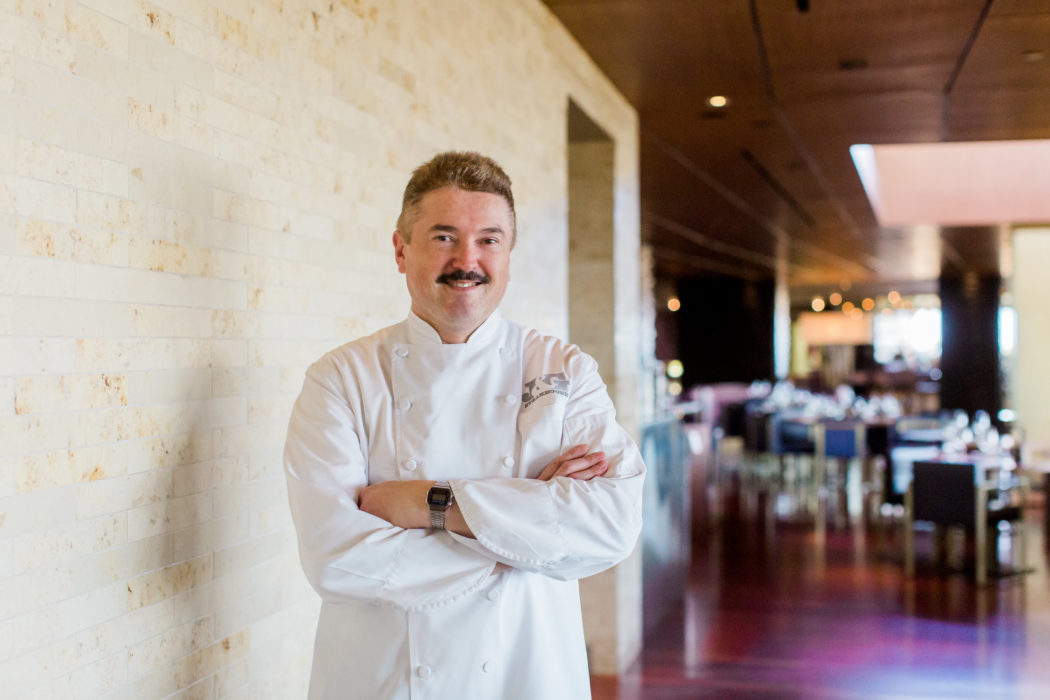
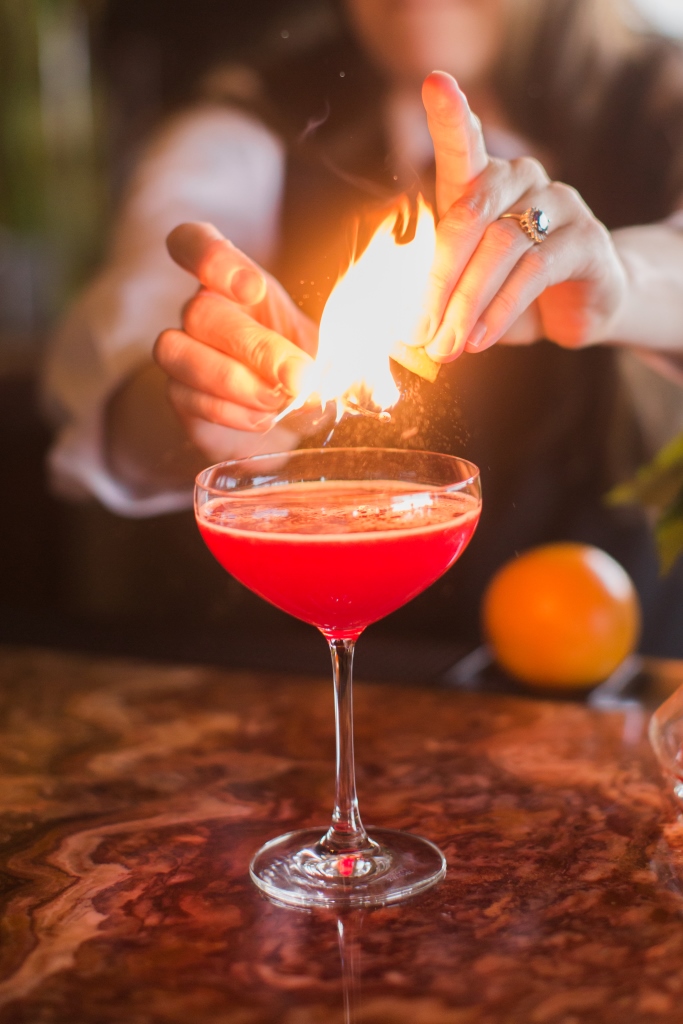
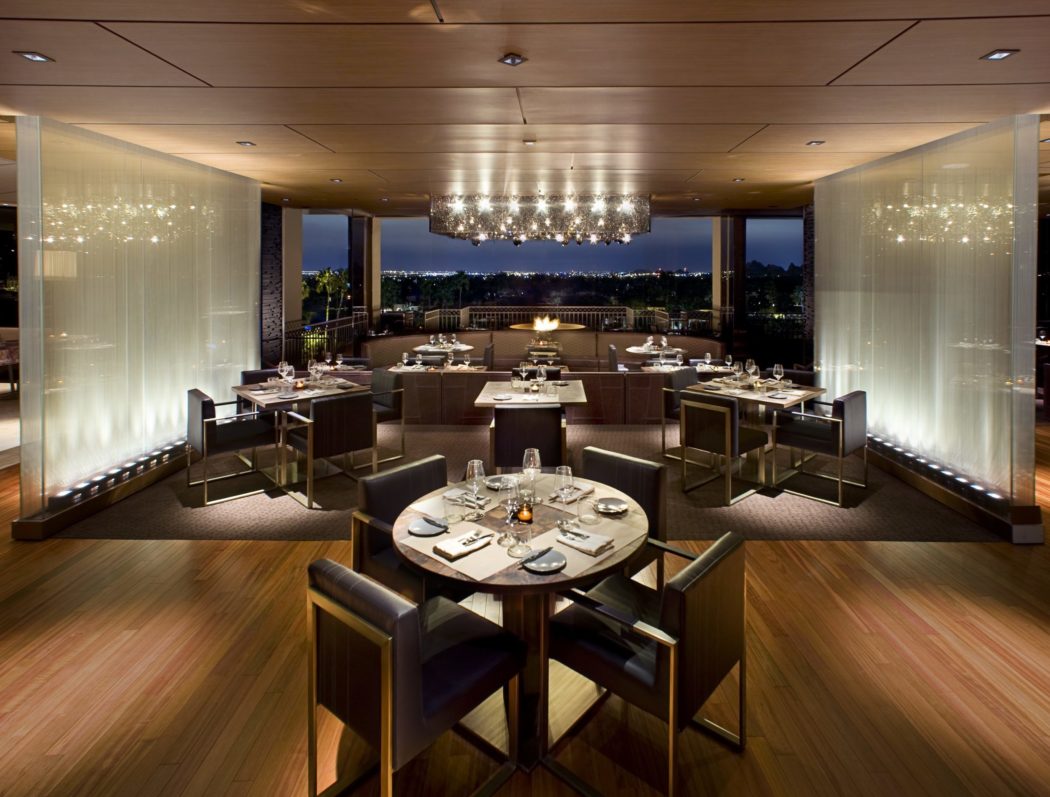
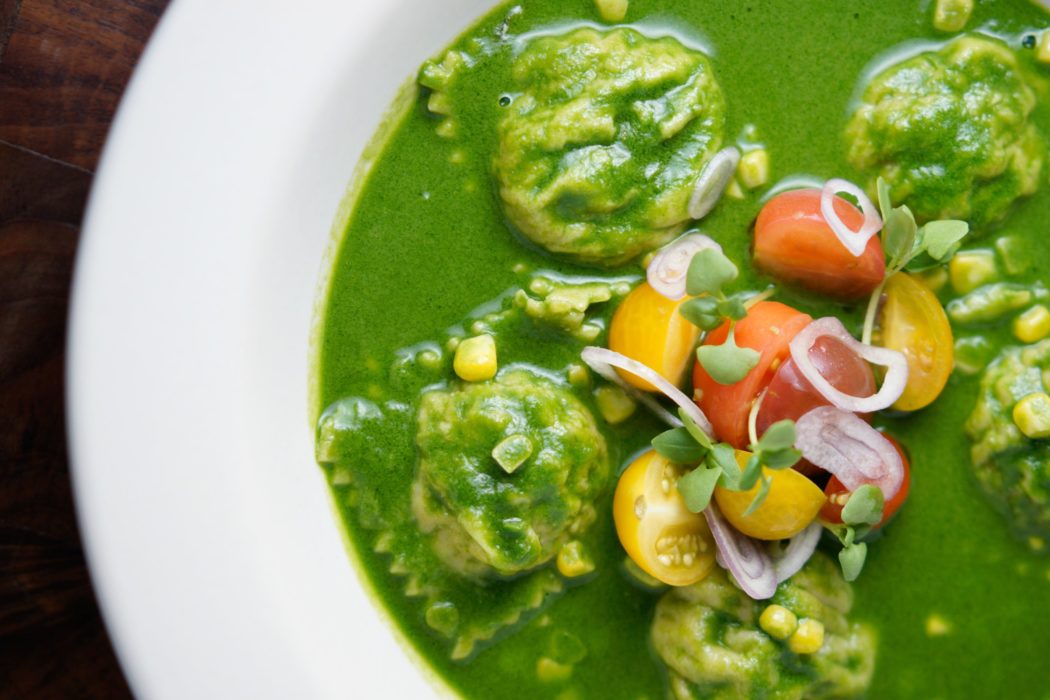
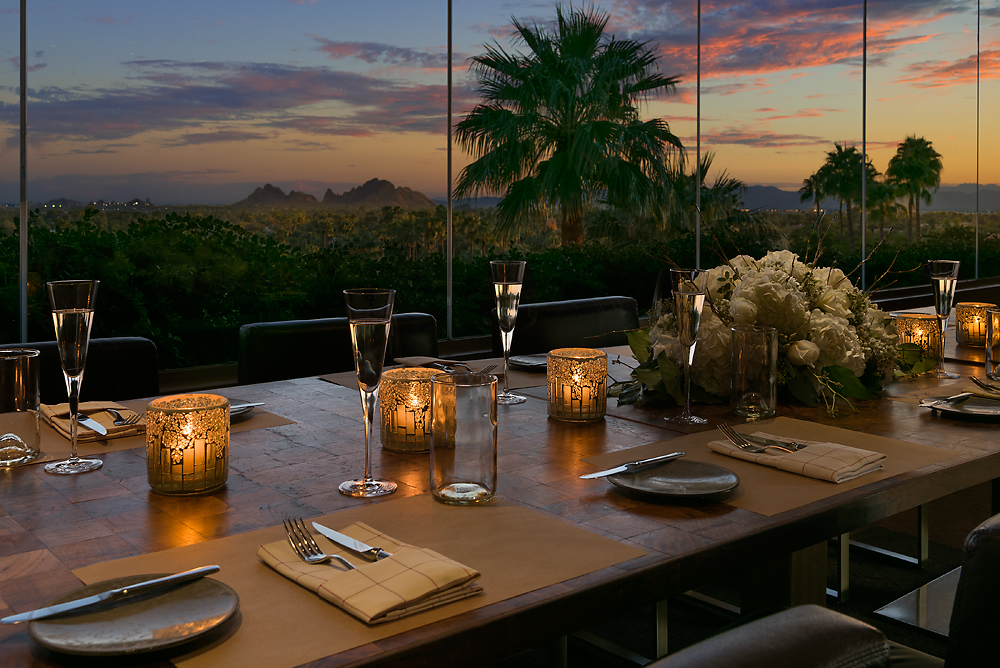
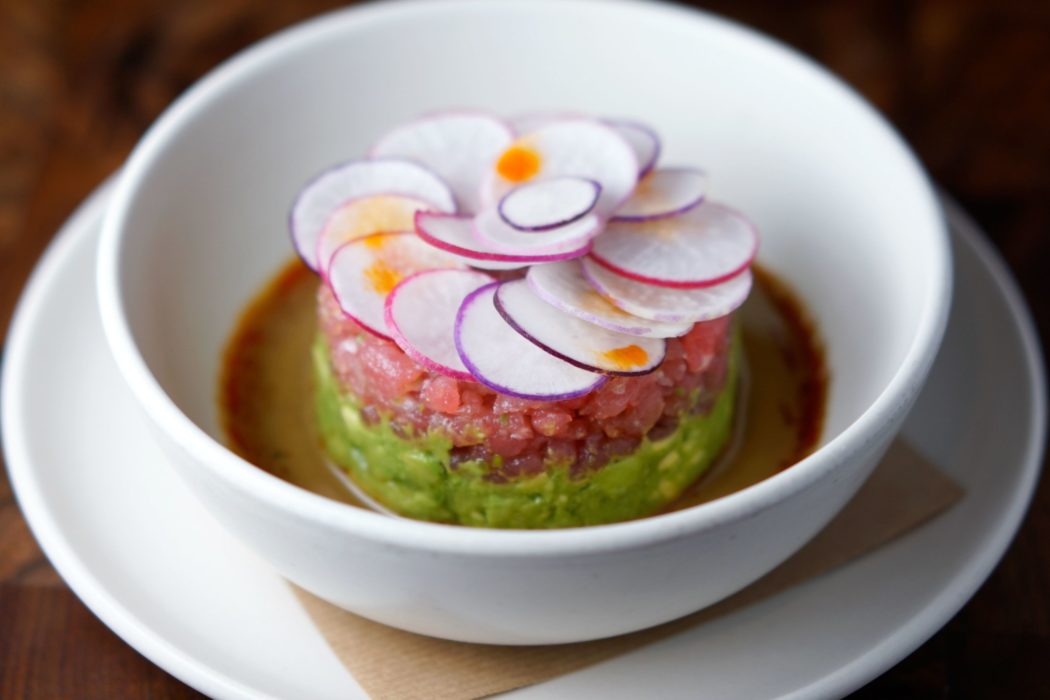
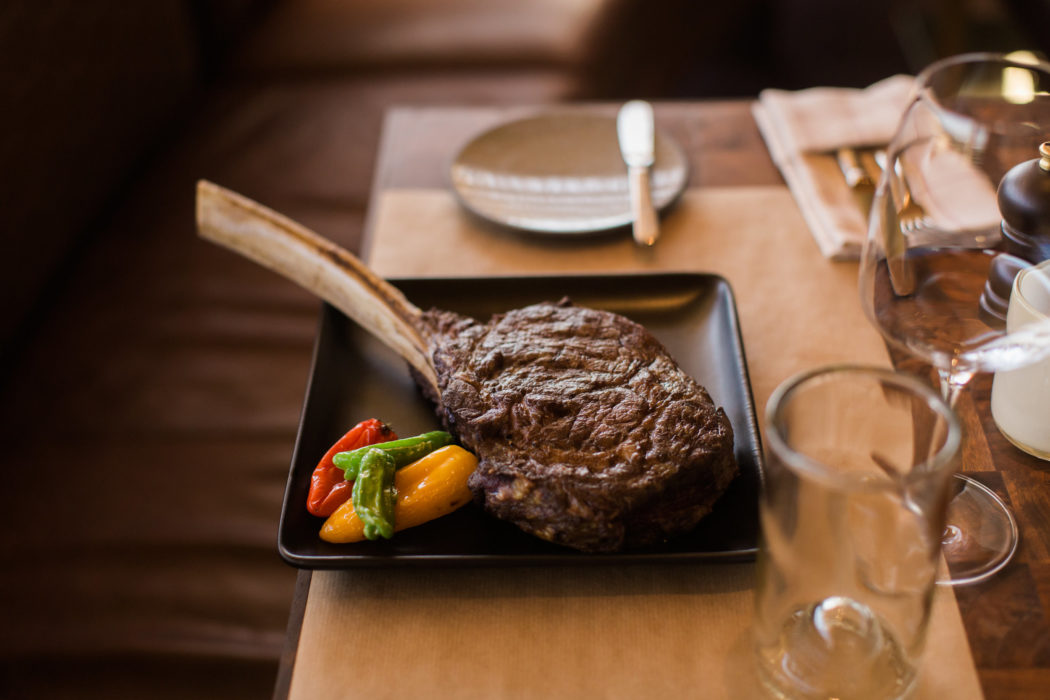
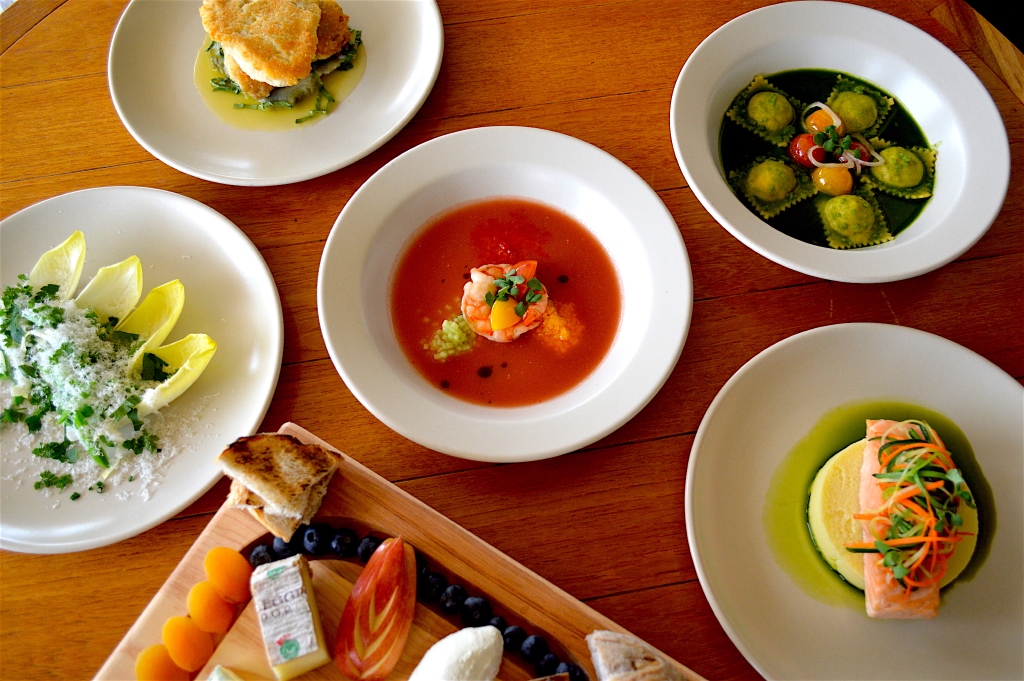
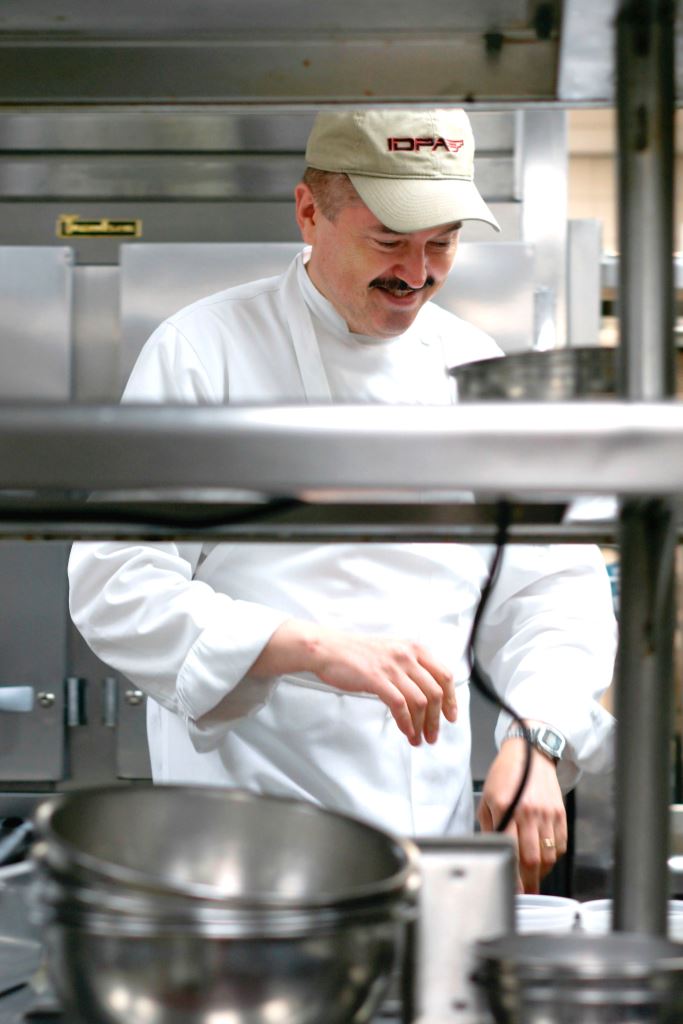
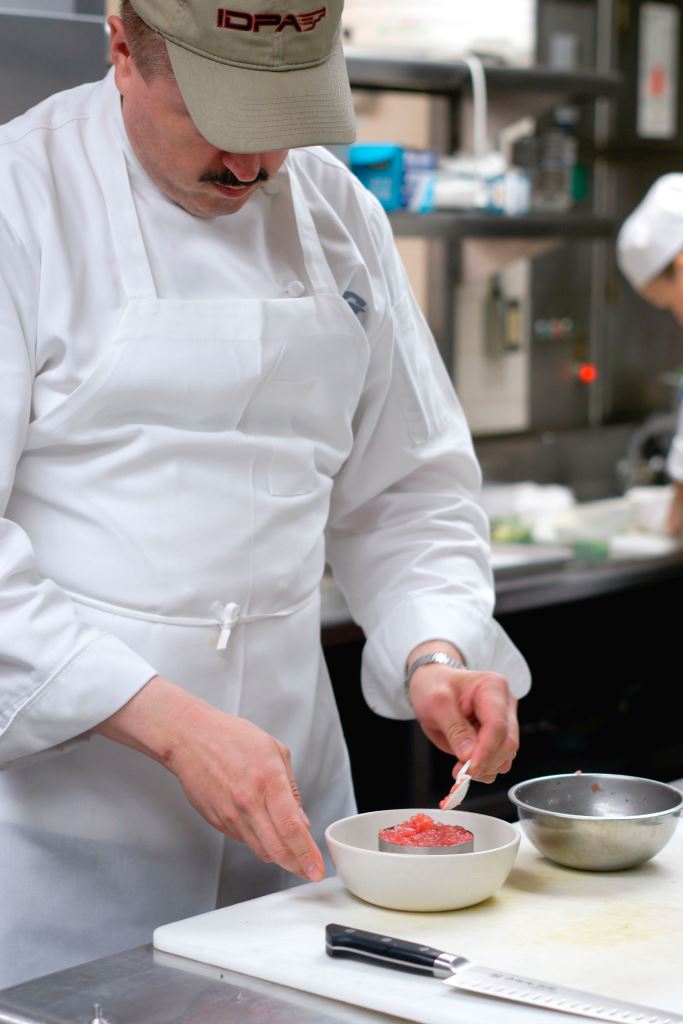
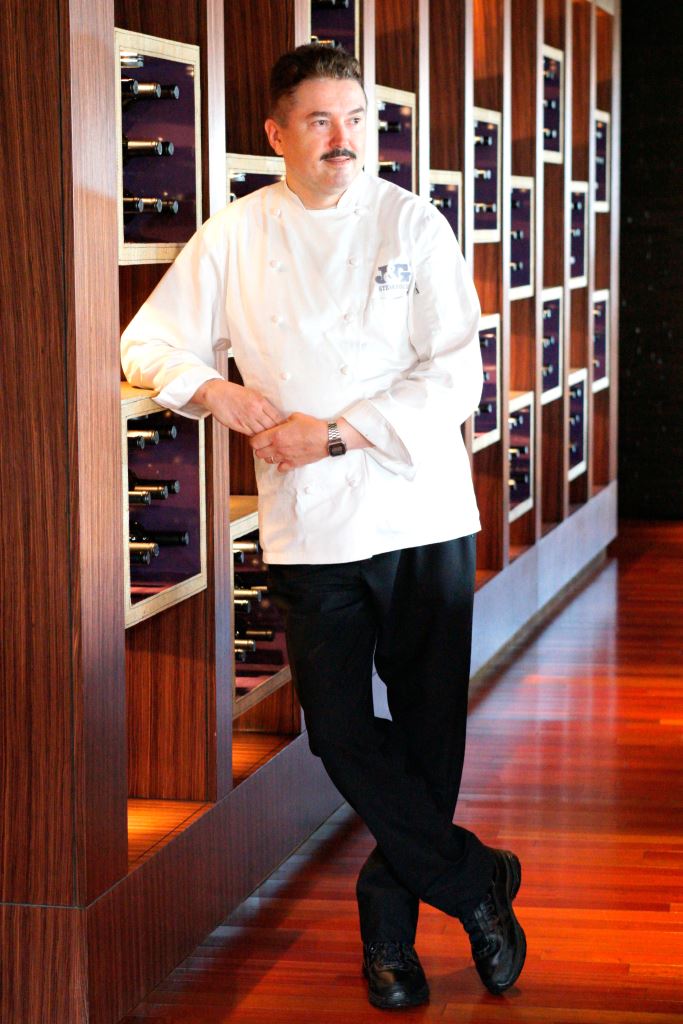
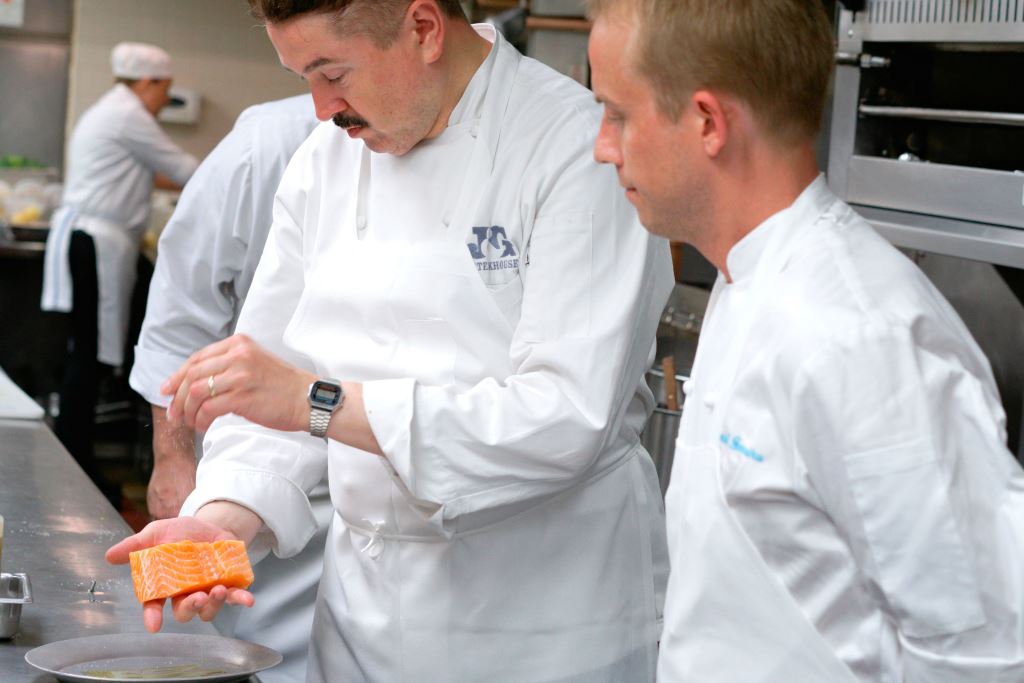
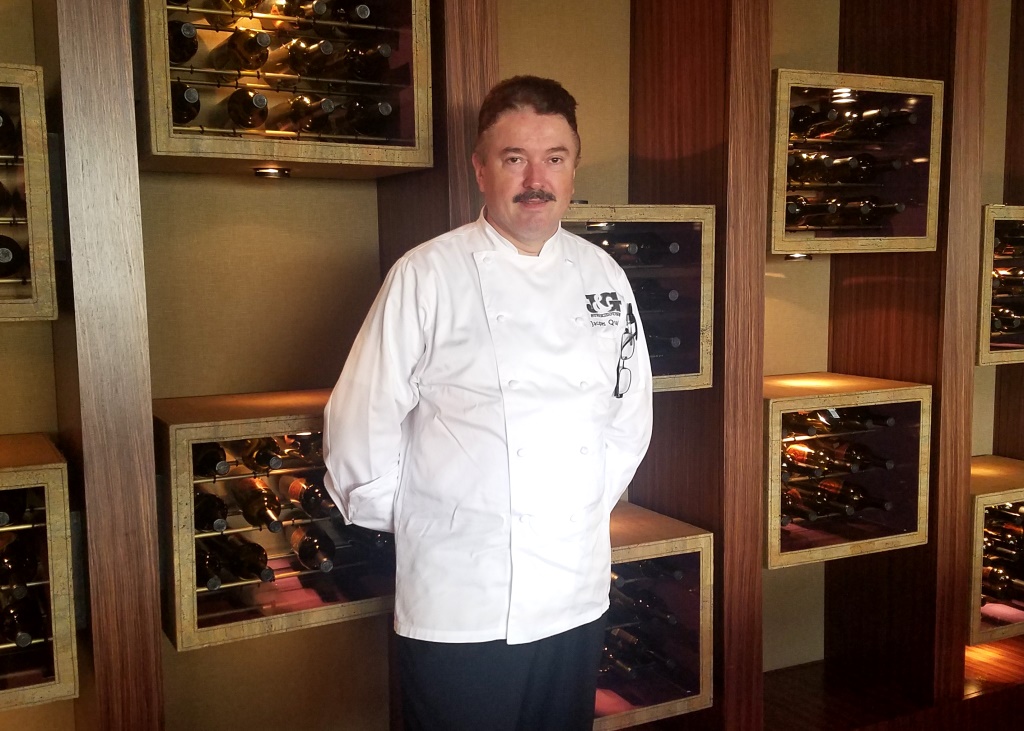
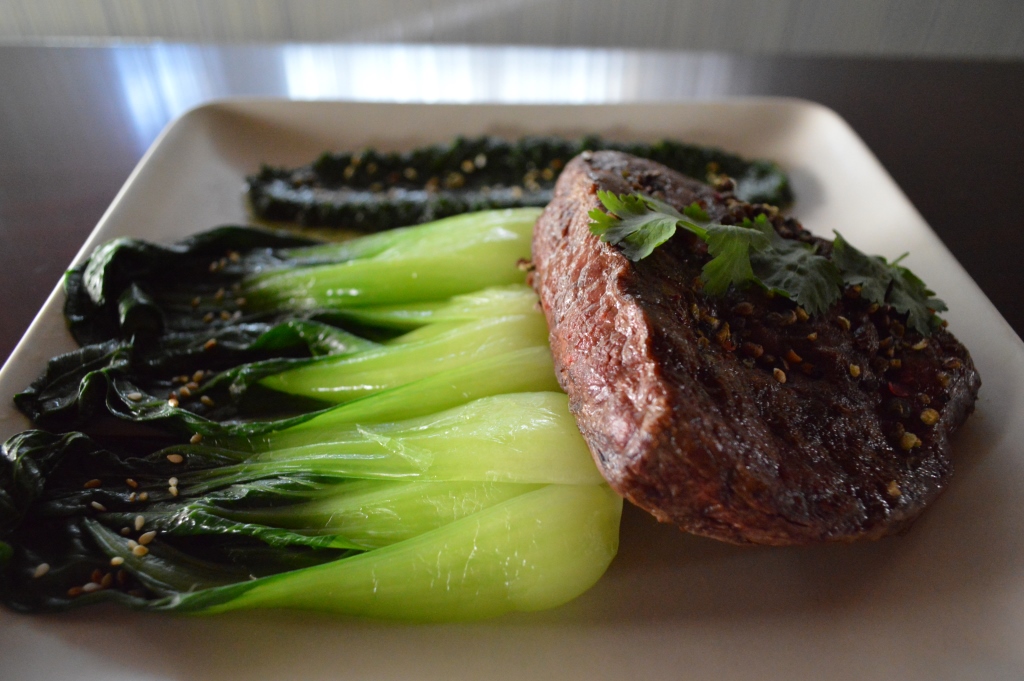
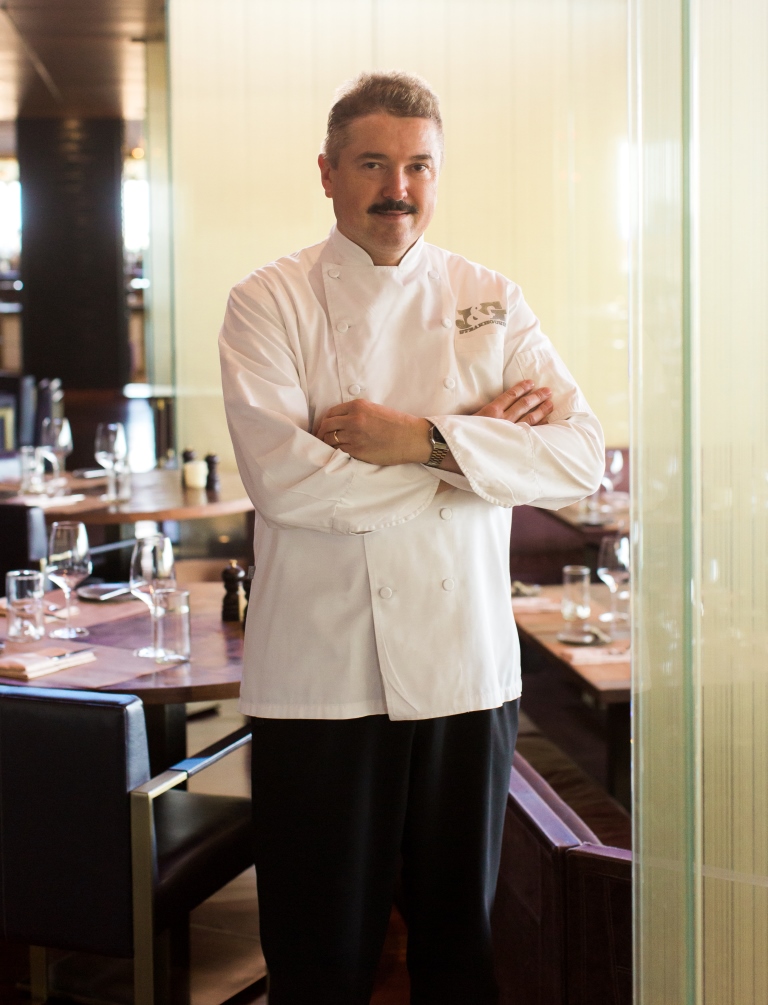
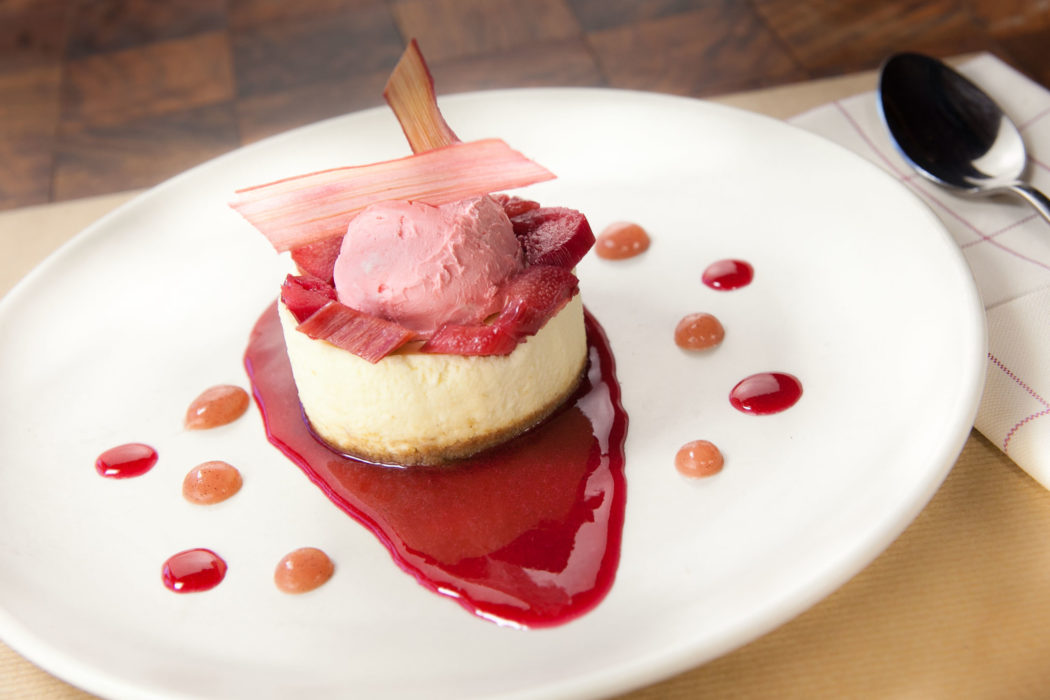
There are no comments
Add yours